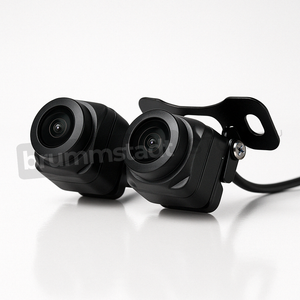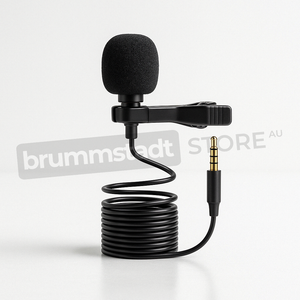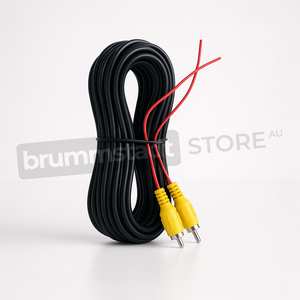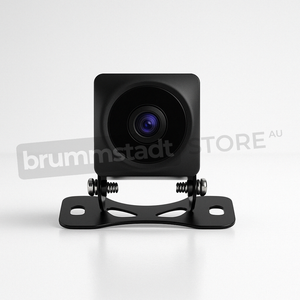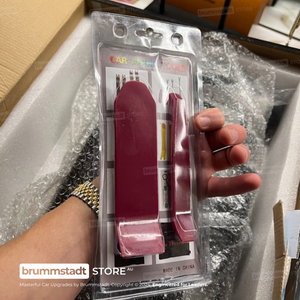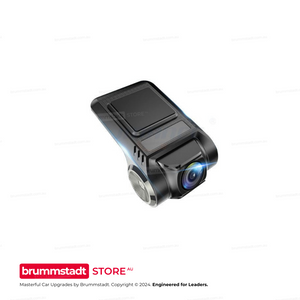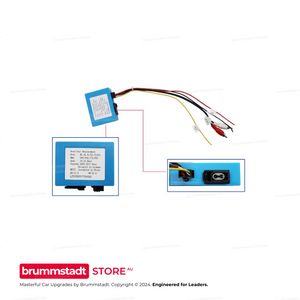Frequently Asked Questions
Everything you need to know about this head unit
Connect the single RCA cable with the yellow plug (included in your package) to extend your Bluetooth signal. This cable doubles as both a camera input AND a Bluetooth/WiFi antenna extension. The two small blue wires attached are antenna boosters that significantly improve connection stability. This simple connection takes 30 seconds and resolves 90% of Bluetooth issues. Make sure it's firmly connected even if you're not using a rear camera.
Try these proven solutions:
1. Quick Fix: Settings → Apps → Z-Link → Disable → Enable → Open (repeat each use)
2. Check Cables: Use the data/charge USB cable (not charge-only)
3. Bluetooth Setting: Disconnect all other Bluetooth connections - CarPlay needs exclusive access
4. Factory Reset Z-Link: Find the pink 'RESET' app, restart, reconnect Bluetooth, then try Z-Link
5. Sound Issues: Switch audio source to 'AUX' or 'USB/AUX' in your vehicle menu
Most issues are resolved with step 1 or 3!
The processor differs between models: The 2/32GB has a 4-Core processor, while 4/64GB and 8/128GB models feature the powerful 8-Core Cortex-A55 processor. Combined with RAM differences: The 2/32GB model with its 4-Core processor and limited RAM may experience slowdowns with heavy multitasking. The 4/64GB with 8-Core provides smooth performance for most users - no lag, seamless app switching, and enough storage for maps and music. The 8/128GB with 8-Core offers maximum performance with its generous RAM allowing unlimited multitasking and massive storage for extensive media libraries. Think of RAM like your desk space - more RAM means you can have more apps open simultaneously without slowing down.
Absolutely normal! These head units are complete replacement systems with their own GPS antenna, microphone, and Bluetooth module. Your factory connectors for these features won't be needed anymore. The important connections are: main power harness, speaker outputs, and the yellow RCA cable (even if not using a camera - it extends Bluetooth range). Any leftover factory plugs can be safely tucked away. If you're unsure about any connection, our support team is here 7 days a week.
Z-Link updates are handled through system firmware updates. Go to Settings → System → System Update. If an update is available, download it to a USB drive (FAT32 format) and install. Important: Never download Z-Link APKs from unofficial sources - they won't work and may cause issues. If you're having compatibility issues with newer iOS versions, the disable/enable workaround (Settings → Apps → Z-Link) usually resolves them while waiting for official updates.
Consider your usage:
• 2/32GB (4-Core): Budget option - fine for basic use, but may lag with multiple apps due to 4-Core processor and limited RAM
• 4/64GB (8-Core): Sweet spot - smooth Android Auto/CarPlay, multitasking, and ample storage
• 8/128GB (8-Core): Premium choice - unlimited multitasking, massive storage, future-proof for years
Most customers choose 4/64GB for the perfect balance of performance and value. The extra RAM makes a huge difference in daily smoothness!
The yellow RCA cable's blue antenna wires also boost WiFi signal! Make sure this cable is connected. Additionally, try these tips: Position the blue antenna wires away from metal surfaces, check that your phone's hotspot is set to 2.4GHz (not 5GHz) for better range, and ensure the head unit's WiFi sleep policy is set to 'Never' in Settings → WiFi → Advanced. For best performance with wireless CarPlay, keep your phone within 1-2 meters of the head unit.
Go to Settings → Sound → Equalizer and adjust to your preference. For more volume, increase the 'Loudness' setting. The 4/64GB and 8/128GB models have superior audio chips that provide cleaner, louder sound. If you have an amplifier, use the RCA outputs for best quality. Also check Settings → Factory Settings (password usually 126) → Audio settings for additional gain controls. Remember: higher-spec models (4GB+) include premium audio components for noticeably better sound.
Yes! Most vehicles work instantly. If not, use the steering wheel learning app: tap the steering wheel icon, press each button on your wheel, and assign functions. For newer vehicles with CANbus, we provide CANbus modules for automatic setup. Some vehicles may need the Key1/Key2 wires connected (usually included in our harness). If you're having trouble, let us know your exact vehicle model and we'll provide specific instructions.
We offer a 30-day return policy. If it doesn't fit or there's a compatibility issue, we'll work with you to resolve it. If you change your mind, a 20% restocking fee applies. Our team verifies compatibility before shipping to minimize issues. We provide installation support 7 days a week to help resolve any problems. With our 3-year warranty and Australian-based support, you can purchase with confidence. Full details in our Refund Policy.
A Historical Perspective of the Hyundai Elantra:
1. First Generation (J1; 1990–1995):
Introduced in 1990, the first Hyundai Elantra emerged as an economical solution focused on affordability, reliability, and practicality. Also recognized as Hyundai Lantra in markets such as Australia and parts of Europe due to naming considerations, it gained appreciation for being straightforward, inexpensive to maintain, and functional, steadily building the carmaker's global reputation.
2. Second Generation (J2/RD; 1995–2000):
The next stage witnessed notable advancement in styling appeal and interior refinement. The second iteration carried forward Elantra’s robust practicality while evolving its driving composure. Known as the Hyundai Lantra in international regions including Australia, the model became respected for comfort-oriented suspension, improved cabin quality, and greater perceived refinement, making it a more attractive option for day-to-day urban use.
3. Third Generation (XD; 2000–2006):
In the early 2000s, Hyundai embarked on further sophistication—improving safety, ride comfort, and build quality. Sharper aesthetics, quiet interiors, and a reliable lineup of efficient engines made this Elantra a strong contender, capturing buyer admiration for delivering high value at a modest price point. This generation dropped the Lantra name internationally and unified under the Elantra moniker worldwide.
4. Fourth Generation (HD; 2006–2010):
Continuing strategic refinement, Elantra's fourth generation introduced modernized aesthetics, improved safety ratings, increased interior spaciousness, and enhanced fuel economy, successfully aligning itself with evolving global consumer standards. Drivers and critics alike recognized the HD series for its smooth, comfortable ride quality, robust build integrity, and intuitive cabin ergonomics, paving the way for notable global sales recognition.
5. Fifth Generation (MD; 2011–2016) - Highlighting 2011–2013:
With the introduction of the 2011 Elantra sedan—the MD series—Hyundai implemented a dramatic design shift under the company's "Fluidic Sculpture" philosophy. This approach translated to graceful, sweeping curves, streamlined proportions, and a sharper aerodynamic profile that stood out within its competitive class. Immediately noted for its attractive and cohesive styling, the fifth-generation Elantra emerged as an expressive alternative to more conservatively styled counterparts like the Toyota Corolla and Honda Civic.
Beyond exterior refinement, the 2011–2013 Elantra carried enhanced handling attributes, stronger fuel efficiency, and elevated cabin quality. An attractively appointed interior with intuitive controls, soft-touch materials, ample space, and comfortable seats contributed to its growing reputation among practical and value-conscious consumers. Internationally, the Elantra was marketed in South Korea as Hyundai Avante, prominently noted for its sleek appearance, strong feature content, and smooth overall driving character.
Comfort combined with reliability earned the fifth-generation Elantra wide appeal. Advanced standard and optional safety offerings, respectable fuel economy from its efficient four-cylinder engines, and balanced driving performance underscored Hyundai's growing refinement.
The introduction of new connectivity features and in-car technologies during this generation laid groundwork for future developments, though early MD-model infotainment units were not yet significantly evolved—making such vehicles ideal candidates for thoughtful aftermarket enhancements.
Thoughtful Technology Integration via Premium Infotainment Upgrades:
For owners prioritizing contemporary connectivity, aftermarket infotainment options such as those supplied by Brummstadt present compelling value. Specifically tailored to integrate unobtrusively within the existing dash of the 2011–2013 Hyundai Elantra, these advanced head units boost usability with modern connectivity like wired and wireless Apple CarPlay and Android Auto compatibility.
Premium infotainment choices provide immediate access to widely-favored mobile navigation apps such as Apple Maps, Google Maps, and WAZE. A practical scenario illustrates the convenience provided: after spending a relaxed evening dining with family, a pre-set destination via smartphone maps seamlessly transfers wirelessly to the vehicle’s head unit upon starting the vehicle, ensuring effortless transition from outing to driving, even through unfamiliar streets or complex traffic environments.
Enhanced technology also encompasses optional high-definition (1080p) front and rear camera systems, reinforcing practicality, situational awareness, and overall vehicular safety. With both front and rear cameras providing continuous recording capabilities, drivers gain reassurance during daily commutes, ensuring vital video documentation if unforeseen incidents occur.
Moreover, this infotainment upgrade extends well beyond basic navigation or entertainment needs. Outfitted with multiple USB inputs, occupants have the opportunity to enjoy family-friendly gaming on the head unit’s display by directly connecting joysticks, positively enriching passenger experience, especially during longer journeys.
An intuitive voice-driven interface further heightens convenience. By incorporating popular voice assistants such as Siri and Google Assistant functionality, seamless interaction with home-based connected electronic systems materializes. Simple voice commands initiated safely inside the vehicle—such as “Hey Siri, turn on porch lights”—demonstrate valuable integration of daily routines, advancing personal convenience while emphasizing safety, freedom from distractions, and reflective consideration for drivers.
Driving Dynamics, Comfort, and Overall Appeal:
The Hyundai Elantra's fifth MD generation has earned a solid position through its tasteful design blend, compelling economy, respectable performance, and the durable practicality Hyundai cars have become known for. Not sacrificing driving enjoyment, this model provides composed connectivity to the road, smooth dynamic operation, and commendable interior comfort. Balanced suspension tuning ensures dependable handling, nimble maneuverability, and satisfactory passenger plushness.
Choosing thoughtfully developed aftermarket infotainment enhancements further broadens enjoyment for owners of the 2011–2013 Hyundai Elantra. Advanced connectivity effectively extends capabilities missing in factory infotainment systems of that era, offering seamless integration with current smartphone technology, intuitive app-based navigation solutions, and real-time road information. Entertaining interactive possibilities, intelligent voice control integration, real-time navigation, and superior safety-oriented camera systems further reinforce the appeal of contemporary infotainment options, providing vehicles like this proven Elantra generation functional conveniences deeply ingrained within modern automotive expectations.
Viewed comprehensively, the evolution of the Hyundai Elantra sedan—particularly the highly applauded MD generation including the 2011–2013 years—presents itself as thoughtful automotive engineering and forward-looking practicality. With confident styling, commendable reliability, predictable road manners, and intelligent technology potential through aftermarket upgrades, fifth-generation Elantras represent enduring automotive satisfaction, emphasizing practicality, modern adaptability, and driving enjoyment.














